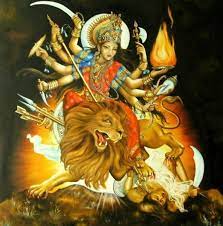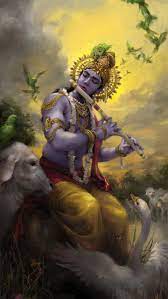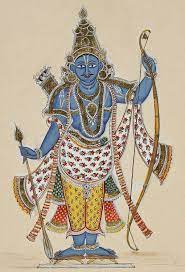
Goddess Durga: The Warrior Divine
In the pantheon of Hindu goddesses, few are as revered and celebrated as Goddess Durga. She is the epitome of strength, courage, and divine power. Durga is worshipped not only for her fierce warrior aspect but also for her protective and nurturing qualities. Let's embark on a journey to explore the multifaceted persona of Goddess Durga and her significance in Hindu mythology and culture.
The Origin of Goddess Durga
Goddess Durga's origin story is deeply rooted in Hindu mythology. According to the ancient scriptures, the Devas (celestial beings) were oppressed and terrorized by the demon Mahishasura. This demon was granted a boon that made him nearly invulnerable, as he could not be killed by any man or god.
In their desperation, the Devas united their powers and created Goddess Durga, bestowing her with their collective energy. She emerged as a divine warrior adorned with multiple arms, each holding a weapon gifted by various gods. Riding a fierce lion, Durga waged a monumental battle against Mahishasura for nine days and nights, ultimately slaying the demon and restoring peace to the cosmos.
Symbolism of Durga's Appearance
Goddess Durga's physical appearance is laden with symbolism:
- Ten Arms:

Her ten arms symbolize her unmatched power and the ability to protect her devotees from all directions.
- Weapons:

Each weapon held in her hands represents the power of a different god. For example, her trident is from Lord Shiva, her discus from Lord Vishnu, and her bow from Lord Varuna.
- Lion:

The lion she rides is a symbol of strength, fearlessness, and control over one's desires.
- Demon Slain:

Durga's foot resting on the slain Mahishasura signifies the victory of good over evil.
Durga Puja: A Grand Celebration

Durga Puja, also known as Navratri or Durgotsava, is an annual festival celebrated with great fervor in various parts of India and among Hindu communities worldwide. This festival typically occurs in September or October and lasts for nine days, culminating in Dussehra or Vijayadashami, when the victory of Goddess Durga over Mahishasura is celebrated.
During Durga Puja, intricately crafted idols of the goddess are created and installed in elaborately decorated pandals (temporary structures). Devotees gather to offer prayers, sing hymns, and witness traditional dances and cultural performances. The festival is not just a religious event but also a time for social gatherings, art exhibitions, and indulging in delicious traditional foods.
Durga's Significance Today
Goddess Durga continues to hold immense significance in contemporary Hinduism and beyond. She represents the eternal struggle between good and evil, the triumph of righteousness, and the power of the divine feminine. Devotees turn to her for strength, protection, and courage, especially during challenging times.
Durga's portrayal as a warrior divine also serves as an inspiration for women's empowerment and gender equality. Her story underscores the idea that women are not only capable of immense strength but are also protectors and nurturers.
Conclusion
Goddess Durga stands as a testament to the multifaceted nature of the divine in Hinduism. Her warrior aspect reminds us of the relentless fight against evil, while her nurturing side embodies love and compassion. The celebration of Durga Puja is not just a religious tradition; it's a cultural extravaganza that brings communities together to honor the indomitable spirit of the Warrior Divine, Goddess Durga.

